Poetry and Place — Ιθάκη / Ithaka
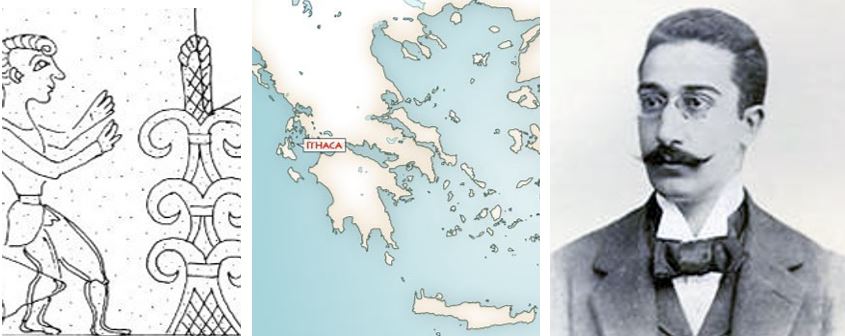
Inspired by place, poetry can enhance the visitor experience.
29 September 2014 by James C. Stratis
What sounds, what music, what prose and what inspired poetry can supplement
the inspiration derived from a place especially an ancient pre-historic place such as Kommos Crete? One outstanding example is the poem “Ithaka” written by Constantine P. Cavafy in 1911.
William Logan in his 15 June 2014 New York Times opinion concluded “Language gainfully employed has its place. Poetry will never have the audience of “Game of Thrones” — that is what television can do. Poetry is what language alone can do.“ 1
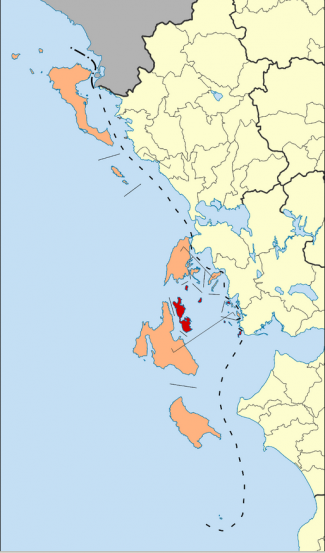
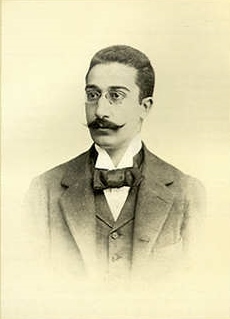
“Ithaka” has itself inspired other interpretations. The poem has been powerfully translated into an English language video by the award winning Greek composer Vangelis (Evangelos Odysseas Papathanassiou) with narration by the famous Scottish actor, Sean Connary, 4 who played Agamemnon, the Minotaur slayer in the Monty Python film Time Bandits. The American-Greek actress and film producer (My Big, Fat, Greek Wedding), Rita Wilson, 5 was moved by the poem to create her own tribute to it at the 24 All-Star Readers on the Words That Rock Their Worlds.
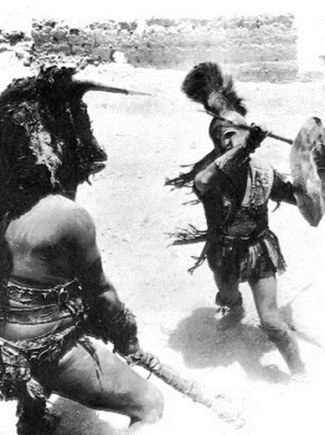

Cavafy was born April 29 1863 and died on exactly the same day in 1933. A visual art installation in commemoration of him was dedicated on April 29, 2013, one hundred and fifty years after his birth. The artificial garden of his poetry in a Thessaloniki stoa6 provides a scenographic experience accompanied by audio versions and readouts of his work and by recorded sounds from the streets of Alexandria, his home town and muse.
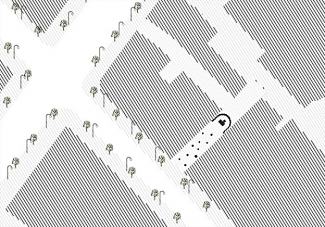
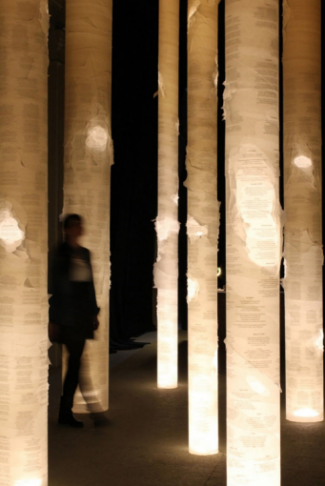
Wendell Berry claimed “If you don’t know where you are, you don’t know who you are,” although arguable, he gives us valuable insight into why a poet would want to ground a poem in a specific place. The poet of place situates himself in place in order to lose himself in it. Poetry of place is actually a poetry of displacement and self-annihilation. The poet replaces self with situation, turning himself inside out, so that the center of “knowing who you are” becomes the circumference of uncertainty. The poem as locus mirrors this dynamic, since it is a measured place, possibly with stanzas (rooms), which has an infinite capacity to contain everything outside it, including the poet. To have identity means to be alone. Loneliness is the anxiety that compels us to identify with an other or with otherness. To disappear into a place. To empathize.9
Kommos contributing scholar L. Vance Watrous wrote “I will suggest that harbors, because of their commercial wealth and exposure to new ideas, have often functioned as agents of social change, as seedbeds for ideas that subvert the orthodoxy of the centralized state. Harbors are a topic that have particularly interested Joe Shaw for many years, an interest that goes well back before his article “Bronze Age Aegean Harborsides” at the third Thera Congress 10 (Shaw 1990), or his tenure as director at Kommos, or even his work as architect at Zakros, back to his graduate school days at Kenchreai. I imagine Joe must have been attracted to that special quality harbor sites possess. After all harbors are magic, liminal places – who hasn’t felt the excitement as an outsider entering a strange harbor for the first time, with its new languages and ways of life? It is as if Joe took to heart the poet Cavafy’s advice in his poem Ithaka.”11
The poetic archaeological site of Kommos within its unchanged context of the Libyan Sea and Mount Ida vista 12 await the spoken / written words that like Cavafy’s Ithaka will supplement the continued conservation, educational outreach and archaeological park development efforts through the art of poetry. If you know Kommos send your inspired writing to KommosAP@gmail.com and we will continue to bring poetry of place to world wide web travelers and visitors to the Kommos port site.
Please visit our video version of the Cavafy poem Ithaka.
References:
- http://www.poets.org/poetsorg/text/poetry-place-james-wrights-secret-light
- http://en.wikipedia.org/wiki/Ithaca
- http://www.cavafy.com/archive/pictures/list.asp
- https://www.youtube.com/watch?v=1n3n2Ox4Yfk
- http://www.oprah.com/entertainment/Celebrities-and-Writers-Discuss-Their-Favorite-Poetry/21
- http://www.archisearch.gr/article/1474/cavafy-by-not-a-number-architects.htm
- http://seanconneryonline.com/pictures_other4.htm
- http://www.laponta.gr/folk-music-news-1/throwing-light-on-homer-s-ithaca-video.html
- http://www.nytimes.com/2014/06/15/sunday-review/poetry-who-needs-it.html?_r=0
- https://tspace.library.utoronto.ca/handle/1807/3013
- Krinoi kai Limenes: Studies in Honor of Joseph and Maria Shaw – Harbors As Agents Of Social Change In Ancient Crete – L. Vance Watrous pgs 101-106
- https://www.kommosconservancy.org/
We continue to seek funding to complete our Master Planning, Construction Documentation with the important Estimate of Probable Construction Costs. Your donation can contribute to this next important phase to help realize the sustainable conservation of the Kommos Archaeological Park.
You can follow us on Twitter (@KommosAP) or join us on Facebook (Kommos Conservancy).
“Μπορείτε να μας ακολουθήσετε στο Twitter (@KommosAP) ή στο Facebook (Kommos Conservancy).”

“And one of the things about poetry and the rhythmic, heightened language of poetry is that it makes it easy to remember. You can sing a story more easily than you can tell it.”
http://news.nationalgeographic.com/news/2015/01/150104-homer-iliad-odyssey-greece-book-talk-travel-world/